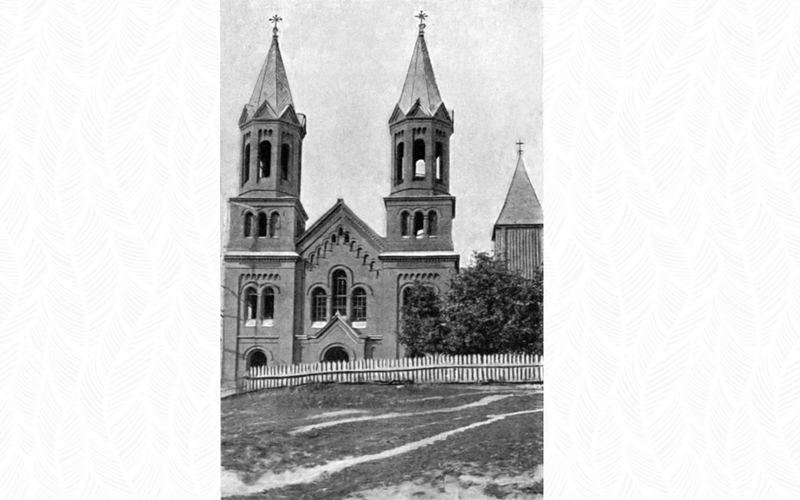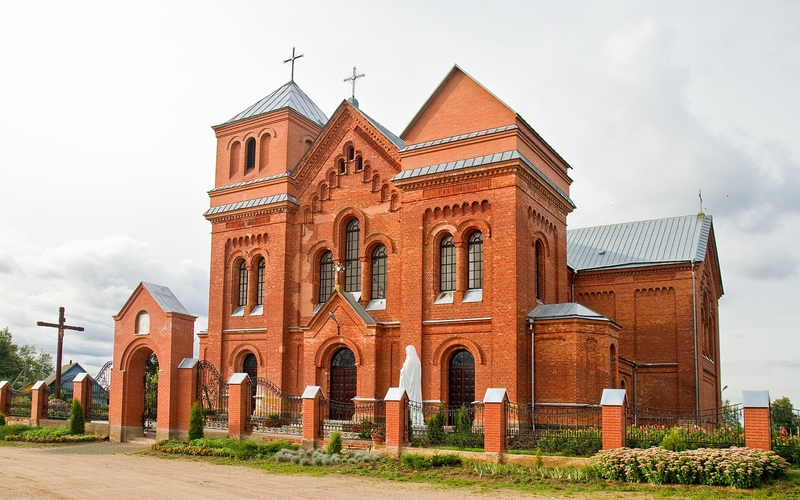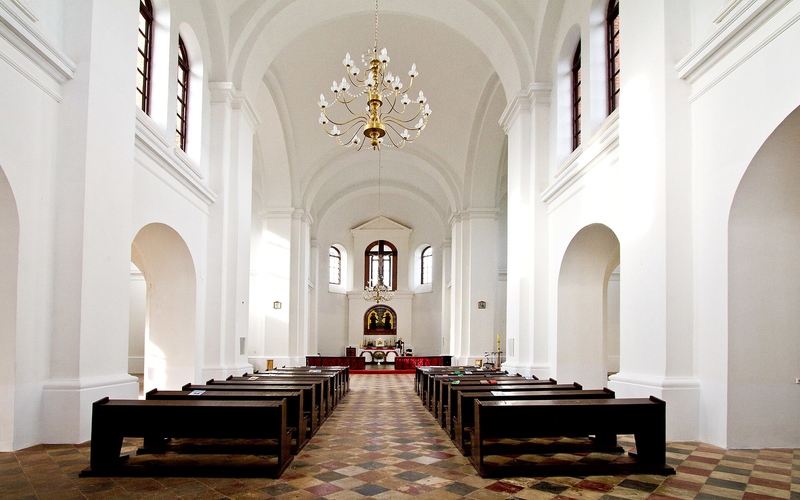- Vitebsk region, Verhnedvinsk District, Rositsa, Tsentralnaya street, 60
About the Church
The history of this church is closely intertwined with the fate of the local community. The mention of a Catholic parish in Rositsa dates back to the second half of the 16th century, marking the beginning of this place's history. In 1778, the first small wooden church was built here, replaced by a new brick church in 1906-1911. It became a significant spiritual and cultural center for the region, serving its parishioners for over a hundred years.

During Soviet period, the Church of the Holy Trinity was closed, but it reopened during the German occupation. The challenging times of the Great Patriotic War (the eastern front of World War II) left their mark on the history of this church. During the punitive operation "Winter Magic" ("Winterzauber") in 1943, the village of Rositsa was destroyed, and priests Father Yuri Kashira and Father Antony Leshchevich were burned (according to another version, Antony Leshchevich was shot for persistent requests to save the children), defending their parishioners. Their feat is remembered and revered today.

The Church of the Holy Trinity Today
After the war, the church underwent a period of closure, with the building serving as a club, stables, grain warehouse, and mill. However, in the late 1980s, the church resumed its activities, and restoration began.

The Church of the Holy Trinity Inside
Today, the Church of the Holy Trinity continues to attract attention with its magnificent Neo-Romanesque style and unique architecture. It is not only a place of worship but also a symbol of overcoming adversity and the resilience of the human spirit.